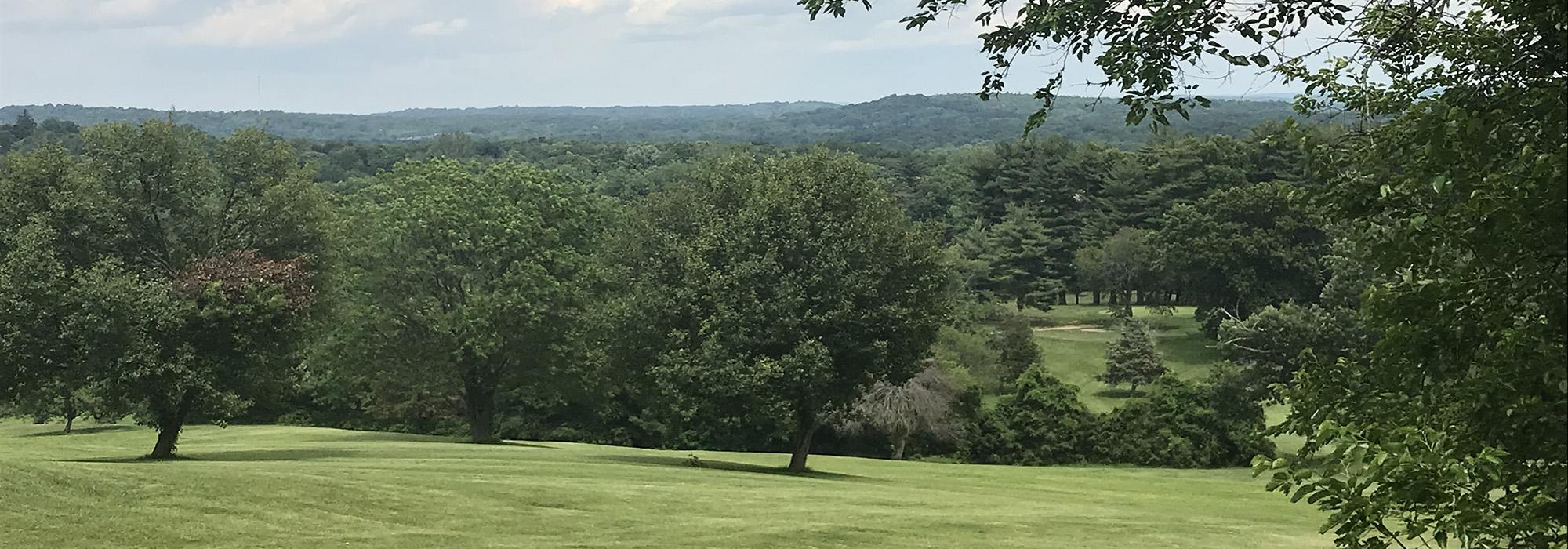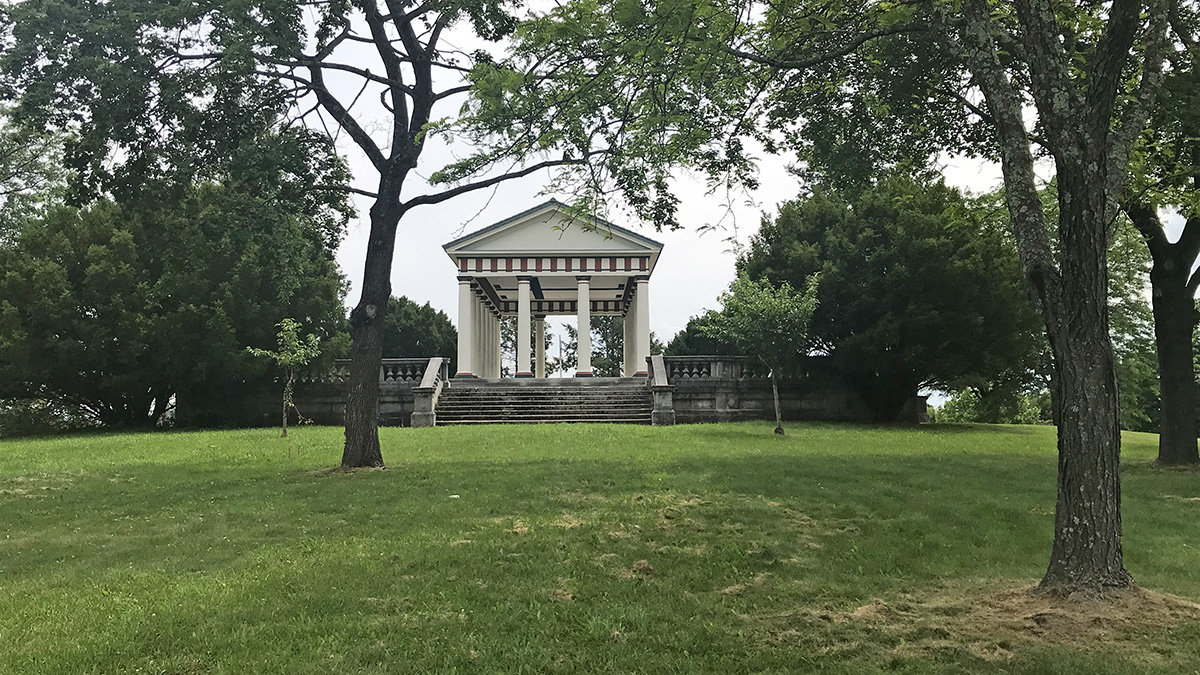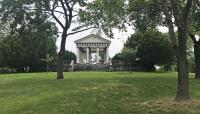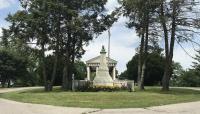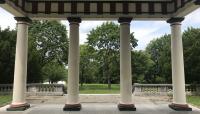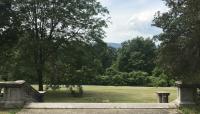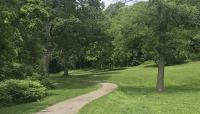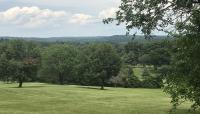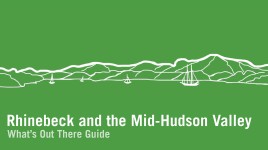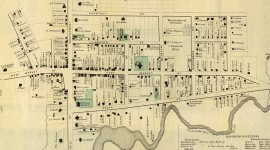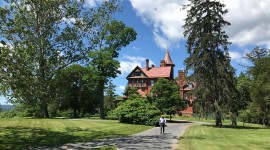Situated just over a mile east of the Hudson River, this approximately 100-acre park rises more than 100 feet from its main entrance along North Clinton Street to its summit. Once an apple orchard, the site was the grounds of the Poughkeepsie Collegiate School from 1836 until 1867. The wooded western slope of the grounds was preserved as a publicly accessible space known as College Grove, where abolitionist Frederick Douglass delivered a landmark address in 1858. After the college closed, the site served briefly as a hotel, and in 1892 the property was purchased for use as a public park. Improvements were made, including widening the curvilinear main drive, establishing a pedestrian path along the hill’s western slope, and connecting the summit to the city’s reservoir, built in 1872. In 1896 the park was donated to the city and Downing Vaux was engaged to further the improvements. Vaux’s 1898 plan separated the park’s drives and pedestrian paths, called for the addition of hundreds of trees, and set aside space for active recreation. A neoclassical collegiate building at the site’s summit burned in 1917 and was replaced by a colonnaded pavilion in 1935.
The extant pavilion is accessed by steps on four sides and affords nearly 360 degree panoramic views. Its south façade is fronted by a looped drive that features a circular grass median, which includes a flagpole, two eastern hemlock trees, and a memorial bench topped with a bust of the park’s founder William Smith. The surrounding sloped, oval lawn is interspersed with coniferous and deciduous trees and encircled by a road. A garden, established in 1934 by park superintendent Frank Berry as a tribute to Poughkeepsie native and rock gardening pioneer Clarence Lown, lies on the hill’s eastern slope. The northeastern section of the park features a nine-hole golf course, designed by Horatio Nelson in 1932. Multiple pedestrian paths traverse the park, including a looped walk around the historic reservoir.



